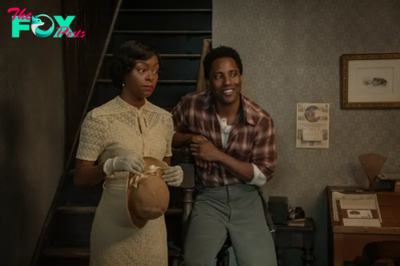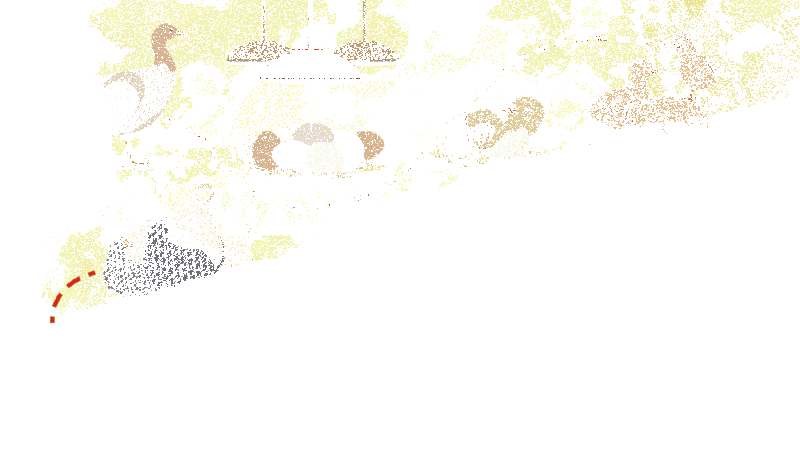Entertainment
The Scandalous History Behind Starz’s Steamy New Show Mary & George
The lure of Starz’s new historical series Mary & George lies in its cast and their embrace of unapologetic sexuality. Julianne Moore portrays a viciously cunning 17th century matriarch, veteran Scottish actor Tony Curran as a devil-may-care king with male courtiers at his disposal, and Nicholas Galitzine as the matriarch’s enchanting son who titillates with raunchy scenes that make his character in Red, White and Royal Blue seem as innocent as a kitten.
Equally intriguing as the performances in this seven-episode miniseries, though, is its grounding in actual English History. Based on the 2017 book The King's Assassin: The Fatal Affair of George Villiers and James I written by British History writer and media journalist Benjamin Woolley, Mary & George is inspired by the true story of Mary Villiers, an Englishwoman of inconsequential social rank, and how she used her son, George, to climb into the higher echelons of English society by orchestrating his sexual relationship with then-sitting monarch, King James I.
“There's not really any big bits of popular entertainment or art that have dealt with this story—either James or Mary and George,” says D.C. Moore, the British playwright behind Killing Eve who serves as showrunner for Mary & George. “It's ironic to use the phrase, given the nature of the show, but it's virgin territory.”
Much of what’s popularly known about the Jacobean era, or the period of King James I’s rule spanning from 1603 to 1625, is its cultural impact. Literary greats William Shakespeare and Ben Jonson flourished during this period, and the monarch sponsored a new translation of the Bible, resulting in the now widely used King James version. But despite studying history at university, Liza Marshall, the show’s producer, said she had never heard anything about James I’s sexual conquests—until 2018, when she came across a listing of a lecture about the monarch’s sexuality on Time Out.
“We’re also not really taught the Jacobean era in schools and universities in England,” she says. Following the lecture, she did a deep dive into the king’s History to find a way into the story until she came across Woolley’s book, which became the show’s narrative compass. “We just fell in love with it as a period,” she adds.
Mary & George doesn’t present itself as factual truth, but Moore claims the show's creators did what they could to “dance around” the history.
“We, particularly in the UK, have seen history through very much a Victorian kind of puritanical lens—and actually, things were much more fluid,” Marshall says. “I think we want a contemporary audience to realize that actually, people back then were exactly like we are now with the same sexual appetites and the same desires and love affairs.”
TIME breaks down what you need to know before your steamy viewing of Mary & George.
Who was Mary Villiers?
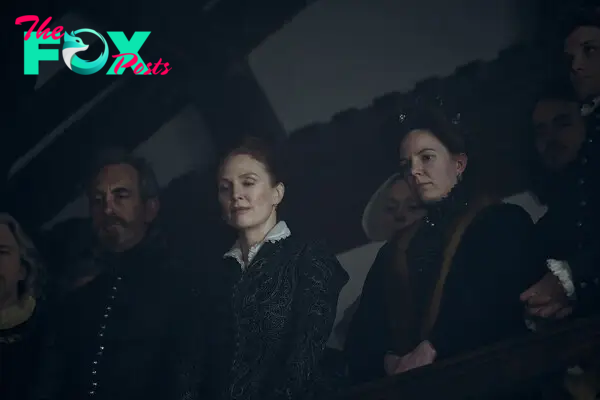
Mary Beaumont, believed to be born around 1570, was part of a provincial English family. A Leicestershire native, Mary eventually earned the Villiers surname after marrying Sir George Villiers, a parliamentarian and English knight. They had four children—Susan, John, George, and Christopher.
Woolley, who studied piles of documents and correspondences to parse through the convoluted History, describes Mary in his book as a “shrewd judge of men and opportunity”—and her sons were not spared.
Mary had married for power and financial security, but Sir George’s death in 1606 left her in a tight spot with four children to raise. To make ends meet, she married a local nobleman half a century her senior with several estates to his name. But that union went south fast when the new husband fell ill, and Mary learned she was to be cut out of the will. So she stole £2,000 and bales of wool worth £300, which at the time was considered a fortune. Although she was caught and accused of theft and fraud, Mary appears to have argued her way out of prosecution by saying she merely wanted to pay her husband’s taxes.
She only waited weeks before marrying again—this time to Sir Thomas Compton, but not without brokering a deal that Sir Compton would fund her son, George, in his trip to France for a high-society education to help elevate his status in British society, and eventually, hers.
“She wanted to find a secure and safe place for herself,” Woolley says. “That involved an active policy of improving her social rank. She didn't really have any other options.”
Who was George Villiers?
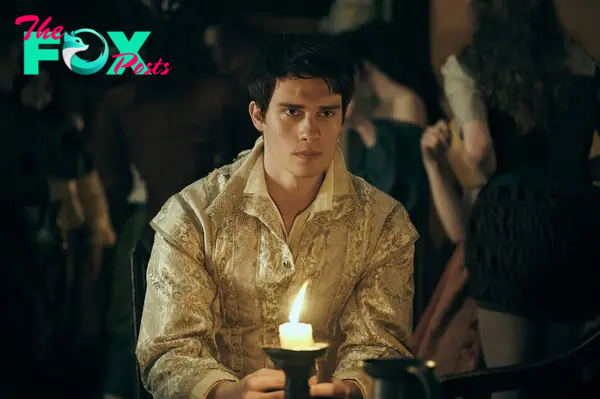
George Villiers, born in 1592, is the namesake of his father, though his mother Mary would have a greater impact on his life. “In George, Mary had her paragon”—Woolley writes—”a charismatic, handsome young man,” who became a vehicle for her ambitions, thus explaining Mary’s constant efforts to educate him and improve his prospects of entering the royal court.
At 21, George crossed paths with James I, who also ruled Scotland as King James VI, in August 1614 at APethorpe, a courtly home in rural Northamptonshire. George at the time was tasked to be royal cupbearer, attending to the King’s drinks, and only managing to enter the court because of a ploy devised by those surrounding the royal seat to oust the Earl of Somerset, Robert Carr, a Scottish aristocrat then close to the King.
Though James I emphatically rebuked sodomy, he was always seen with a coterie of males and had a “favorite”—a close courtier and confidante that also influenced his political decisions. Historians have debated what happened between the king and his favorite inside royal bedchambers, but James had not shied away from voicing his love for these men in letters that have survived him: besides George and Carr, King James I also expressed affection for another favorite, French noble Esmé Stewart.
George vied for the king’s attention—mostly through his dancing, and he eventually caught the king’s eye and replaced Carr. Being the king’s favorite gave George political power and he rose swiftly among the ranks. Just a year after meeting James I, he was knighted as Gentleman of the Chamber. By 1617 he became the Earl of Buckingham, and by 1623, he became a Duke—a title rarely given to non-royals. In the latter part of their relationship, George pressured James I to lead England into the Anglo-Spanish war in 1625, following the breakdown of marriage negotiations between James I’s son, Charles, and the daughter of the Spanish king.
George eventually married Lady Katherine Manners and sired four children with her, but his relationship with James I persisted until the king’s death.
What do we know about King James’ death?
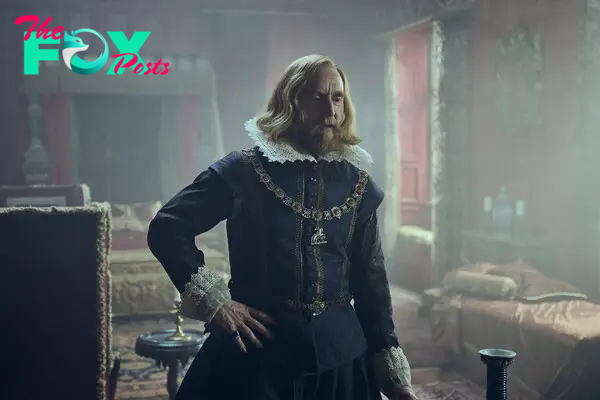
Mary & George takes on James I’s controversial death, and longstanding speculation about whether George played a role.
The facts remain murky 400 years later. What is known is that King James I died on March 27, 1625 at 58 years old, at Theobalds Palace in Hertfordshire, accompanied by his son Charles, as well as George. While official reports attributed his death to a condition linked to the prevalent malaria or typhus of the era, with dysentery also a possibility, the shrouded events within the "Chamber of Sorrows"—the name given to the king's deathbed—fueled speculation in the following months about George’s possible involvement.
Woolley, who wrote the book the show was based on, said writing about George’s possible involvement in James’ death was “another little minefield to try and step through without blowing myself up.” He wrote in the book that he encountered the accusation while researching another book, about botanist and herbalist Nicholas Culpeper. Woolley had reached out to a toxicologist who said that James I had probably been poisoned—and that it was George’s continuous interference with James I’s treatment, by making him drink potions and Mary placing curative plasters on the ill monarch, that accelerated his death.
Showrunner Moore decided to adhere to Woolley’s narrative, not only because of their fealty to the book, but he explains it was “natural” for the love affair between James I and George to reach that conclusion dramatically. “His whole reign was about creating a long lasting legacy of peace,” Moore says. “I do think if you look at the real history, George destroyed it. And the sort of killing of the king becomes, for me, a sort of manifestation of that death of peace.”
Michael B. Young, a professor of history at Illinois Wesleyan University who has also written the book King James and the History of Homosexuality says George’s involvement in killing James I is merely a “conspiracy theory of the highest order.”
“There was plenty of opportunity, there was some motive,” he said. “There were disgruntled doctors, physicians, such as they were at the time, who were eager to blame someone else for the king's death. And it became a political issue.”
But with a lack of forensic evidence, George's role in the death of James I remains speculation. As Young puts it: “I think that's one mystery that will never be solved.”
-

 Entertainment3h ago
Entertainment3h agoPHOTO GALLERY: Ryan Adams – OLG Stage at Fallsview On line casino – Niagara Falls, Ontario – November 24, 2024
-

 Entertainment5h ago
Entertainment5h agoDonna Kelce’s ‘Holiday Touchdown’ Cameo Includes Sweet Easter Egg to Son Travis: ‘Love You Mommy’
-

 Entertainment8h ago
Entertainment8h agoAmerica On CoffeeWe’re simply inviting you to take a timeout into the rhythmic ambiance of our breakfast, brunch and/or espresso alternatives. We’re comfortable everytime you cease by.Shoe Shoe Shine – The Dynamic Superiors
-

 Entertainment14h ago
Entertainment14h ago3 Completely different Kinds of TV Appearing Roles
-

 Entertainment14h ago
Entertainment14h agoAmerica On CoffeeWe’re simply inviting you to take a timeout into the rhythmic ambiance of our breakfast, brunch and/or espresso alternatives. We’re comfortable everytime you cease by.SYRUPING UP YOUR VERY OWN COFFEE FLAVORS
-

 Entertainment14h ago
Entertainment14h agoMeet Ava, the Golden Tiger Cub in Thailand Set to Be the Next Cute Viral Sensation
-

 Entertainment14h ago
Entertainment14h agoBest Tom Hardy Movies that Are Must-Watch
-

 Entertainment19h ago
Entertainment19h agoThe Smithereens with John Hampson – West Herr Riviera Theatre – North Tonawanda, NY – November 20, 2024




